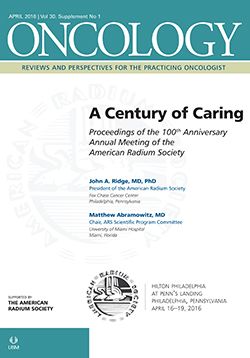(S046) Prospective Evaluation of Stereotactic Radiation Therapy for Spinal Metastases in the Postoperative Setting: A Secondary Analysis of Mature Phase I/II Trials
On univariate and multivariate competing risks analysis, sarcoma histology and larger preoperative tumor volumes were significantly associated with worse local control. Radioresistant histology and Karnofsky performance status were significant predictors for OS on multivariate analysis.
Randa Tao, MD, Andrew J. Bishop, Zachary Brownlee, Pamela K. Allen, Stephen H. Settle, MD, PhD, Eric L. Chang, MD, Xin Wang, PhD, Behrang Amini, MD, PhD, Nizar Tannir, MD, Laurence D. Rhines, MD, Paul D. Brown, MD, Amol J. Ghia, MD; UT MD Anderson Cancer Center; USC Norris Cancer Hospital
PURPOSE: To evaluate the outcomes of patients treated on prospective phase I/II protocols with postoperative stereotactic body radiation therapy (SBRT) and identify the associated prognostic variables.
MATERIALS AND METHODS: In two prospective phase I/II studies, 76 patients with 81 tumors were treated with SBRT for spinal metastases between 2002 and 2010. All patients underwent SBRT after spine surgery, which included laminectomy, vertebrectomy, vertebroplasty, and a combination of these techniques. Renal cell carcinoma was the most common histology represented (n = 39; 51%), followed by sarcomas (n = 14; 18%). Thirty-six patients (47%) were treated with prior conventional radiation to the spine (median dose: 30 Gy). Patients were followed with spinal magnetic resonance imaging studies to determine local control (LC) and spinal progression-free survival (PFS). Pain and other symptom data were collected prospectively to determine treatment response and toxicity.
RESULTS: The median follow-up was 29 months (range: 1–145 mo) for all patients and 75 months for living patients (range: 6–145 mo). The actuarial 1-year rate of LC was 82%, adjacent vertebral body control was 84%, spinal PFS was 65%, and overall survival (OS) was 76% (median: 29 mo). On univariate and multivariate competing risks analysis, sarcoma histology (subhazard ratio [SHR], 2.36 [95% CI, 1.03–5.4]; P = .043) and larger preoperative tumor volumes (SHR, 1.01 [95% CI, 1.0–1.01]; P = .006) were significantly associated with worse LC. Radioresistant histology and Karnofsky performance status were significant predictors for OS on multivariate analysis. There were no differences in LC between patients treated with different surgical techniques or different preoperative or postoperative Bilsky grades. There were no grade ≥ 3 neurologic toxicities.
Proceedings of the 98th Annual Meeting of the American Radium Society -americanradiumsociety.org
